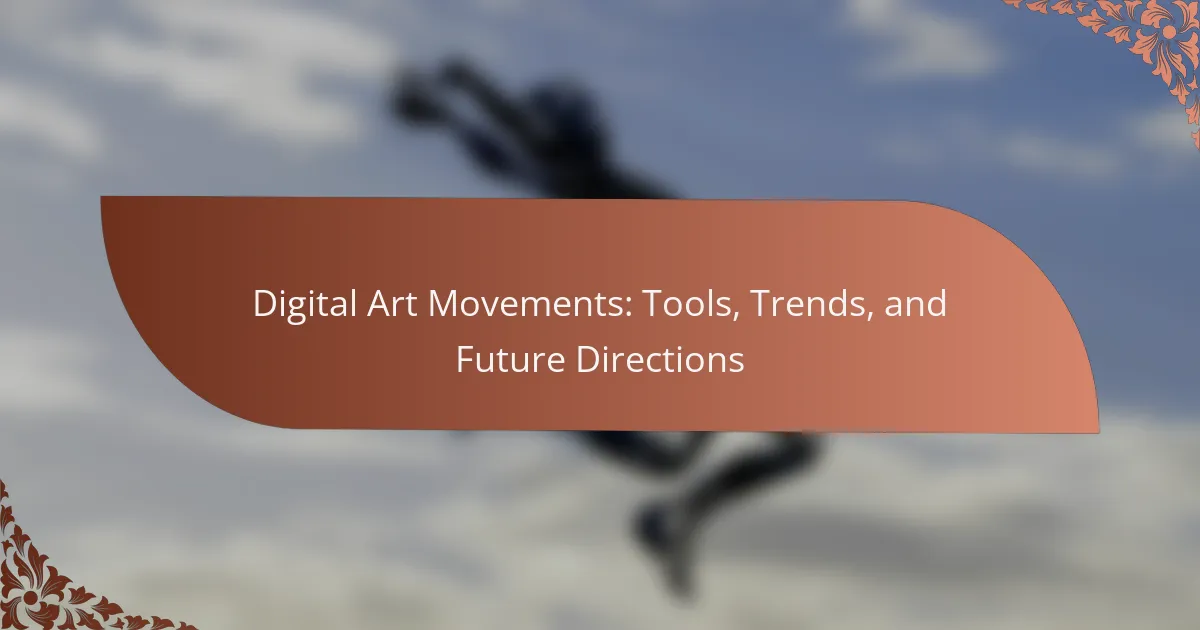Digital art movements are reshaping the creative landscape, driven by innovation and technology. This article explores essential tools for artists, key trends like AI and NFTs, cultural influences on styles, and future directions for accessibility and diversity. It also addresses challenges such as market saturation and copyright issues that digital artists face today.
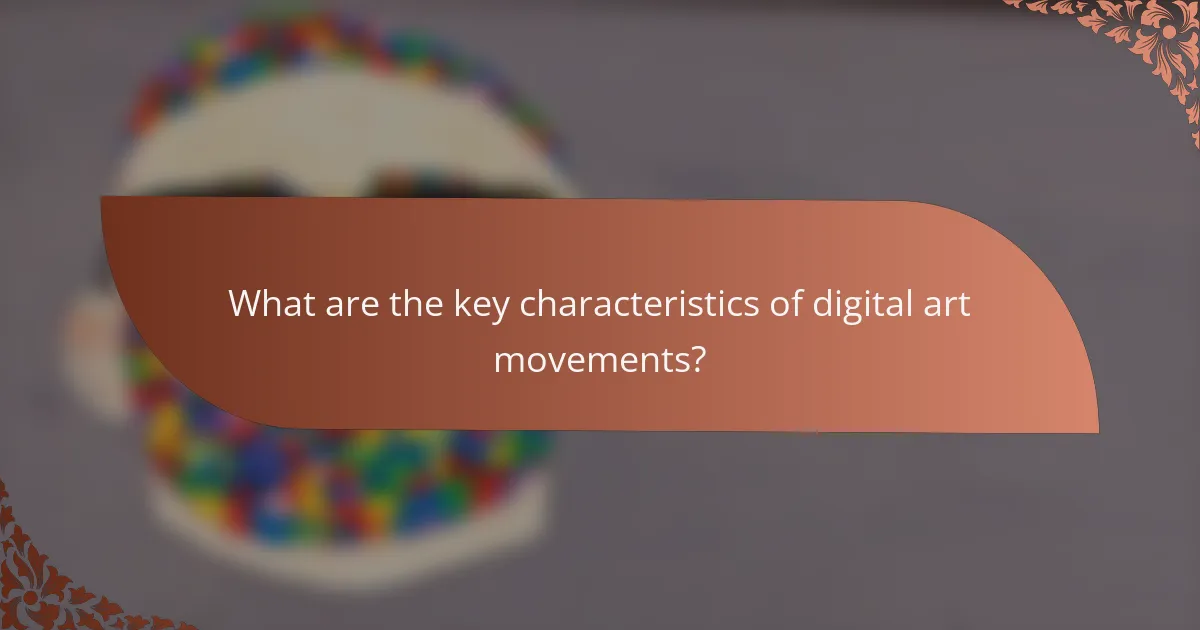
What are the key characteristics of digital art movements?
Digital art movements are characterized by innovation, accessibility, and integration of technology. They reflect the evolution of artistic expression through digital mediums. Key characteristics include diverse styles, collaborative platforms, and interactive experiences. Movements such as pixel art, generative art, and virtual reality art showcase unique attributes, emphasizing the blend of traditional techniques with digital tools. Additionally, the democratization of art through online communities and social media has made these movements more prevalent and influential.
How do technology and culture influence digital art trends?
Technology and culture significantly shape digital art trends by influencing tools, accessibility, and aesthetic preferences. Emerging technologies like virtual reality and artificial intelligence provide artists with innovative mediums and techniques. Cultural movements, such as social justice and environmental awareness, inspire themes and narratives in digital art. As a result, artists adapt their work to reflect contemporary issues, fostering a dynamic interplay between technology and cultural expression. This evolution leads to unique attributes in digital art, such as interactive installations and immersive experiences, which differentiate it from traditional forms.
What role do social media platforms play in the evolution of digital art?
Social media platforms significantly influence the evolution of digital art by providing exposure, community engagement, and new tools for artists. They enable artists to share their work widely, connect with audiences, and collaborate with peers globally. Platforms like Instagram and TikTok have become essential for artists to showcase their creativity and gain recognition. As a result, the accessibility of digital art has increased, allowing diverse voices to emerge. This democratization fosters innovation and new trends, shaping the future direction of the digital art landscape.
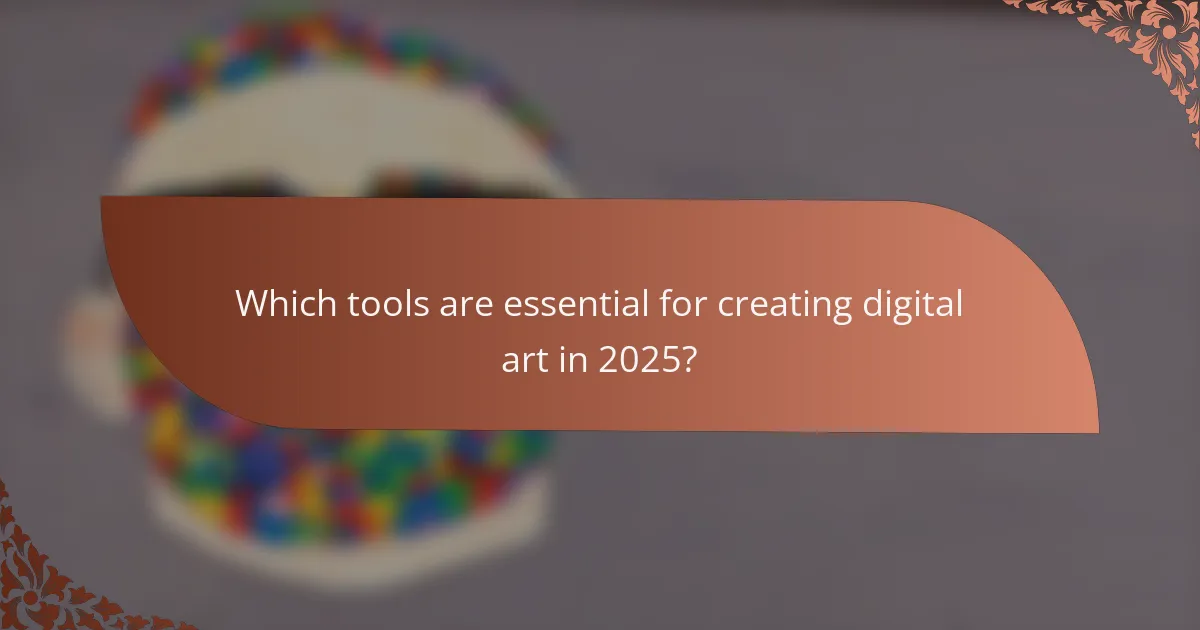
Which tools are essential for creating digital art in 2025?
Essential tools for creating digital art in 2025 include advanced graphic tablets, AI-assisted design software, and augmented reality applications. These tools enhance creativity and streamline workflows. Graphic tablets provide precision, while AI software offers innovative features for efficiency. Augmented reality applications enable immersive experiences, expanding the possibilities for artists.
What software options are popular among digital artists today?
Popular software options among digital artists today include Adobe Photoshop, Corel Painter, Procreate, Clip Studio Paint, and Affinity Designer. These tools offer a range of features tailored for various digital art styles and workflows. Adobe Photoshop remains a standard for photo editing and digital painting, while Procreate is favored for its intuitive interface on iPads. Corel Painter excels in simulating traditional painting techniques, and Clip Studio Paint is preferred for comic and manga creation. Affinity Designer provides a cost-effective alternative for vector graphics. Each software has unique attributes that cater to different artistic needs.
How do hardware choices impact digital art creation?
Hardware choices significantly influence digital art creation by affecting performance, precision, and creative possibilities. High-performance graphics cards enhance rendering speed, while tablets with pressure sensitivity enable detailed brushwork. Additionally, software compatibility with hardware determines the range of tools available for artists. For example, a powerful CPU can handle complex software, allowing for intricate designs. Ultimately, the right hardware can elevate an artist’s workflow and output quality.
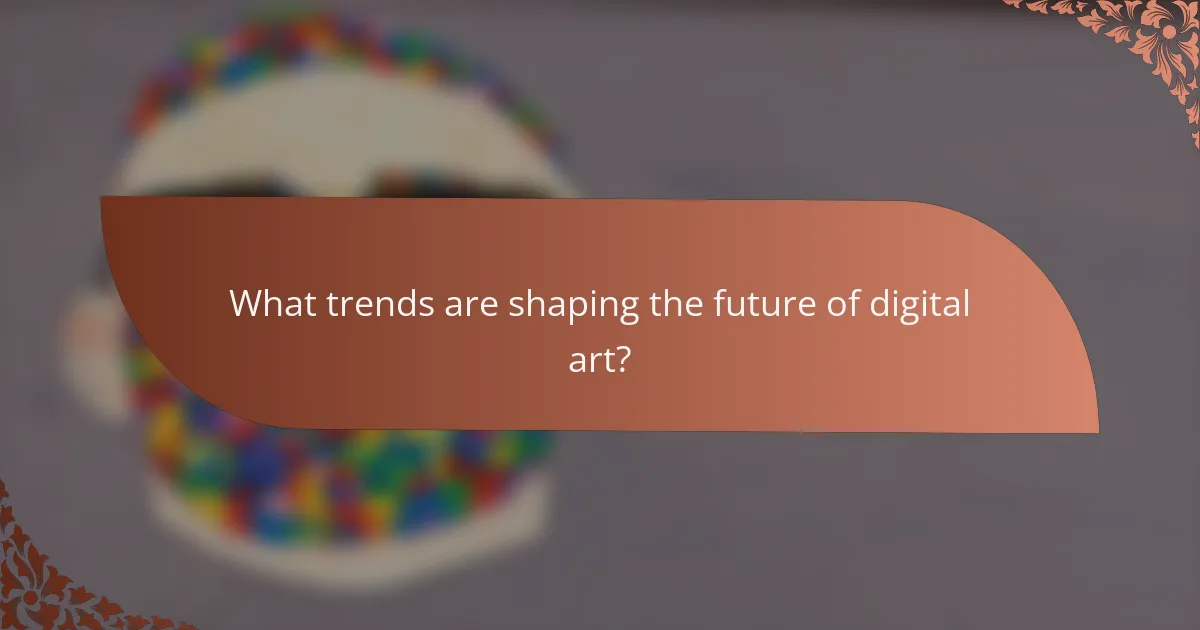
What trends are shaping the future of digital art?
Innovative technologies, evolving aesthetics, and community-driven platforms are shaping the future of digital art. Artificial intelligence is enhancing creativity by generating unique artworks. Virtual and augmented reality are creating immersive experiences, allowing artists to engage audiences in novel ways. Blockchain technology is transforming ownership and provenance through NFTs, providing artists with new revenue streams. Collaboration tools are fostering global artist communities, promoting diverse perspectives and styles. These trends indicate a dynamic future where digital art continues to evolve and redefine artistic expression.
How is artificial intelligence being integrated into digital art?
Artificial intelligence is revolutionizing digital art by enhancing creativity and efficiency. AI tools assist artists in generating unique visuals, automating repetitive tasks, and providing inspiration through algorithm-driven suggestions. For instance, AI algorithms analyze existing artworks to create new pieces that blend various styles. This integration allows for innovative forms of expression, pushing the boundaries of traditional art. As a result, artists can focus more on conceptual development while AI handles technical execution, leading to a collaborative future in digital artistry.
What are the emerging styles and techniques in digital art?
Emerging styles and techniques in digital art include generative art, augmented reality, and 3D modeling. Artists increasingly utilize artificial intelligence to create unique pieces, blending traditional techniques with modern technology. Collaborative platforms foster community-driven projects, enhancing creativity and innovation. The rise of NFTs has transformed ownership and distribution, allowing artists to monetize digital works effectively.
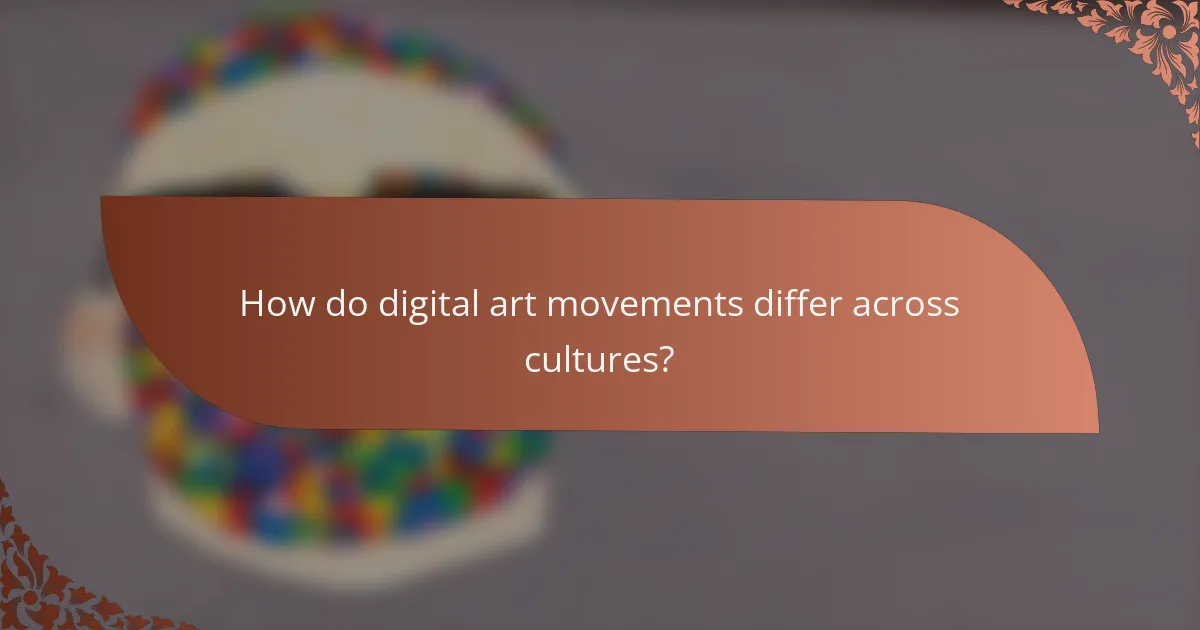
How do digital art movements differ across cultures?
Digital art movements vary significantly across cultures due to differing historical contexts, technological access, and artistic philosophies. For instance, Western digital art often emphasizes individualism and innovation, while Eastern movements may focus on community and tradition.
Cultural influences shape the themes and techniques used in digital art. In African digital art, vibrant colors and cultural motifs reflect rich heritage. In contrast, Scandinavian digital art often incorporates minimalism and functionality, mirroring regional design principles.
Global connectivity has fostered cross-cultural exchanges, blending styles and techniques. Artists now collaborate internationally, creating hybrid forms that challenge traditional boundaries. This evolution demonstrates how digital art continues to adapt and reflect diverse cultural narratives.
Future directions may include increased accessibility through technology, allowing underrepresented voices to contribute to the digital art landscape. As a result, the diversity of digital art movements will likely expand, enriching the global art scene.
Which regional influences shape digital art practices?
Regional influences shape digital art practices through cultural, historical, and technological contexts. For instance, Asian digital art often incorporates traditional motifs with modern techniques, while Western practices may emphasize individualism and innovation. Additionally, local art scenes foster unique collaborations that reflect social issues, enhancing the diversity of digital expressions globally. Artists adapt tools and platforms to resonate with their cultural narratives, resulting in distinct movements that challenge conventional boundaries.
What are the cultural implications of digital art in various societies?
Digital art influences cultural expression and identity across societies. It fosters new forms of creativity, democratizes access to art, and reshapes traditional art narratives. In many cultures, digital art serves as a platform for marginalized voices, allowing diverse perspectives to be shared globally. Additionally, it challenges conventional art forms, prompting discussions about authenticity and originality. As a result, digital art movements reflect societal values and technological advancements, creating a dynamic interplay between culture and innovation.
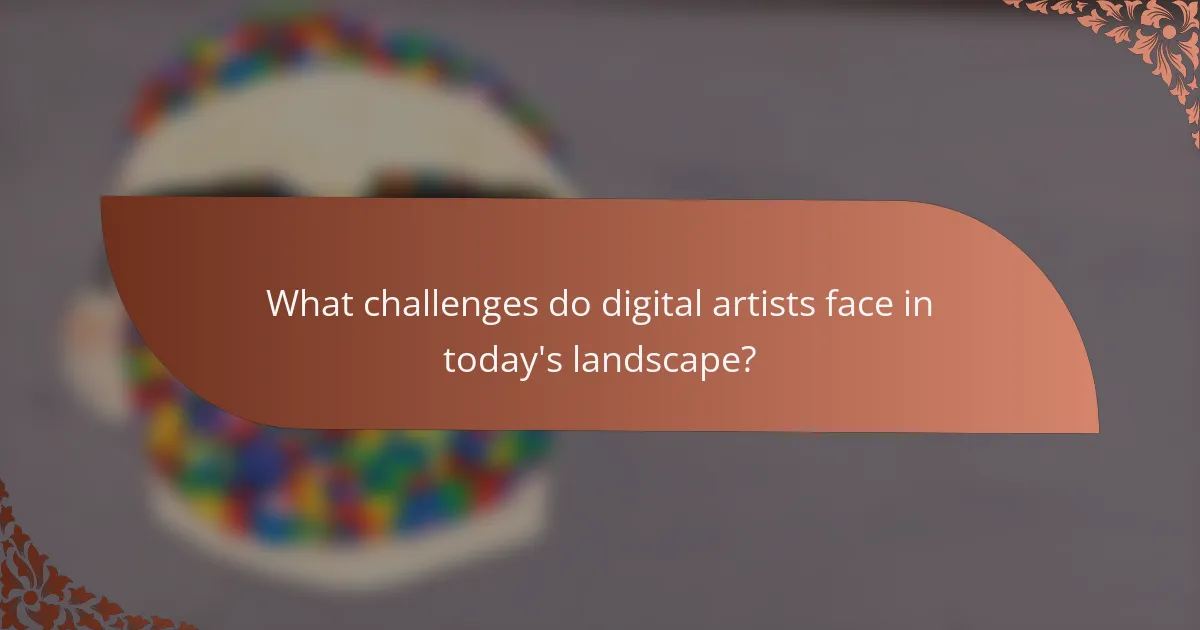
What challenges do digital artists face in today’s landscape?
Digital artists face numerous challenges today, including market saturation, evolving technology, and copyright issues. Market saturation makes it difficult for artists to stand out. Evolving technology demands continuous learning and adaptation. Copyright issues complicate the protection of original work, especially in the digital realm. Additionally, the reliance on social media for visibility can create pressure and affect mental health. These factors collectively shape the contemporary landscape for digital artists.
How do copyright issues affect digital art creators?
Copyright issues significantly impact digital art creators by limiting their control over their work. Artists face challenges in protecting their intellectual property, which can lead to unauthorized use and reproduction. This affects their ability to monetize their creations and can diminish their reputation if their work is misrepresented. Additionally, navigating copyright laws can be complex and time-consuming, often requiring legal assistance. As a result, understanding copyright is crucial for digital artists to safeguard their rights and ensure fair compensation.
What are the common obstacles in monetizing digital art?
Common obstacles in monetizing digital art include market oversaturation, lack of visibility, and pricing challenges. Artists often struggle to stand out in a crowded marketplace. Building a personal brand and gaining recognition are essential for attracting buyers. Additionally, many artists find it difficult to determine fair pricing for their work, which can lead to undervaluation. The evolving nature of digital platforms also presents hurdles in reaching target audiences effectively.
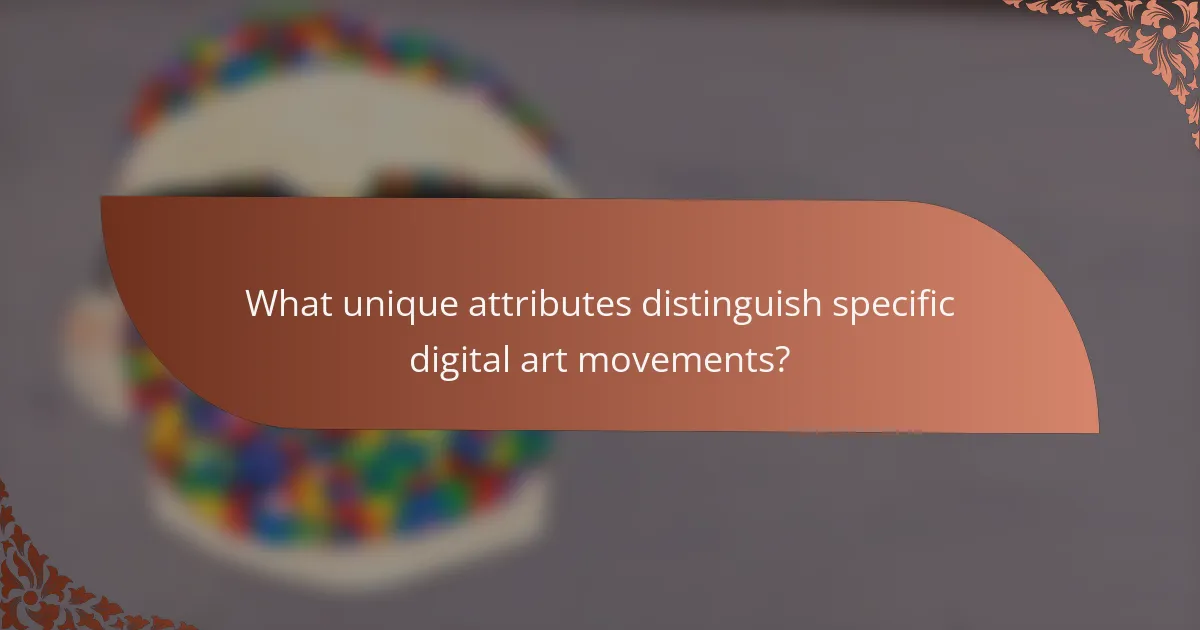
What unique attributes distinguish specific digital art movements?
Unique attributes distinguishing specific digital art movements include their distinctive techniques, thematic focus, and cultural influences. For instance, glitch art emphasizes digital errors, while generative art relies on algorithms. Each movement reflects the technological context of its time, shaping its aesthetic and purpose. Emerging movements often blend traditional styles with digital innovation, showcasing the evolution of artistic expression.
How do community-driven movements influence digital art styles?
Community-driven movements significantly shape digital art styles by fostering collaboration and innovation. These movements encourage artists to explore new techniques, share resources, and respond to cultural trends. For instance, platforms like DeviantArt and Behance enable artists to showcase their work, receive feedback, and inspire one another.
The rise of social media has accelerated this influence, allowing diverse styles to emerge rapidly. Artists often blend traditional techniques with digital tools, reflecting community values and aesthetics. As a result, unique attributes like the incorporation of memes or interactive elements become prevalent in digital art, distinguishing it from traditional forms.
Moreover, community-driven initiatives often prioritize inclusivity, leading to rare styles that challenge conventional norms. This evolution not only enriches the digital art landscape but also sets the stage for future trends, as emerging artists continue to reshape their craft through collective engagement.
What are the defining traits of niche digital art communities?
Niche digital art communities are defined by their focus on specific styles, techniques, and shared interests. These communities often emphasize collaboration, innovation, and the use of unique digital tools. Members frequently exchange feedback and support, fostering a sense of belonging. Additionally, they showcase diverse artistic expressions, from traditional digital painting to generative art, enriching the overall landscape of digital art.
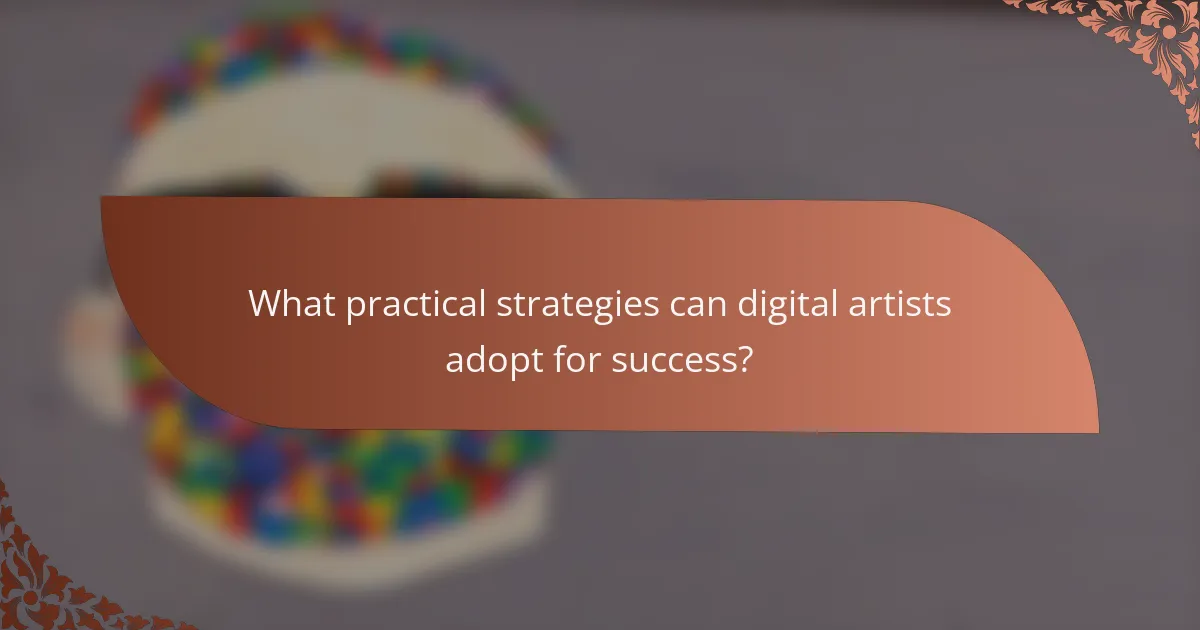
What practical strategies can digital artists adopt for success?
Digital artists can adopt several practical strategies for success, including building a strong online presence, networking with other artists, and continuously improving their skills. Embracing digital tools like graphic tablets and software can enhance creativity and efficiency. Staying updated with trends and participating in online communities fosters collaboration and exposure. Setting clear goals and maintaining a consistent portfolio helps attract potential clients and opportunities.
What best practices should artists follow when showcasing their work online?
Artists should prioritize high-quality visuals, consistent branding, and engaging narratives when showcasing their work online. High-resolution images attract attention and convey professionalism. Consistent branding across platforms fosters recognition and trust. Engaging narratives about the artwork create emotional connections with the audience. Utilizing social media analytics helps artists understand their audience better and tailor their content accordingly. Additionally, collaborating with other artists can expand reach and enhance exposure.
What common mistakes should new digital artists avoid?
New digital artists should avoid overcomplicating their projects, neglecting fundamentals, and ignoring feedback. Simplifying designs enhances clarity and impact. Mastering basic techniques builds a strong foundation. Actively seeking constructive criticism fosters growth and improvement.
